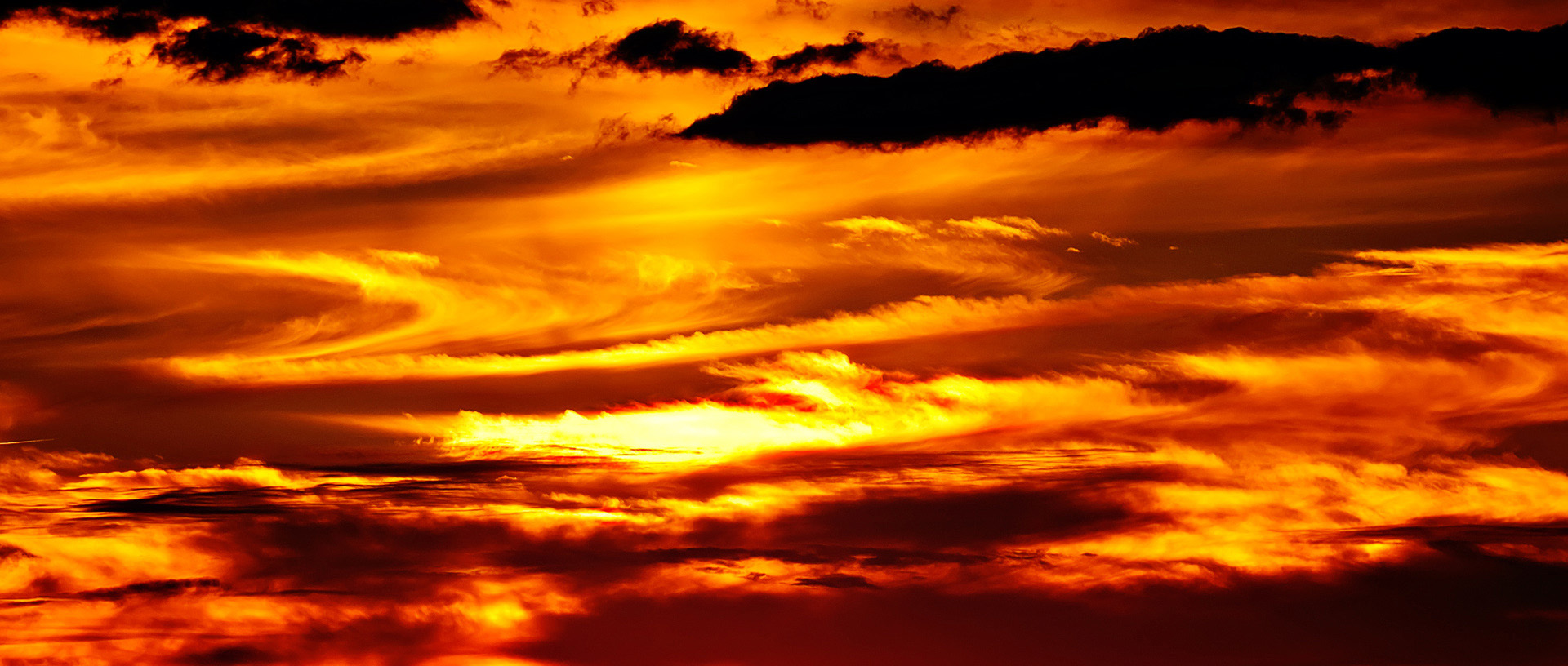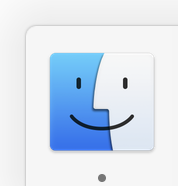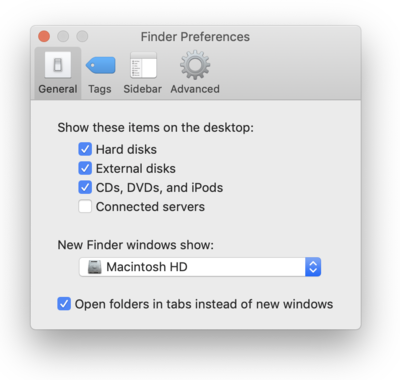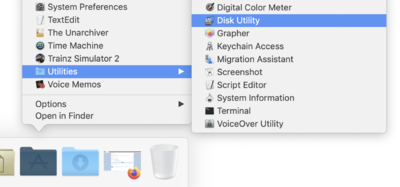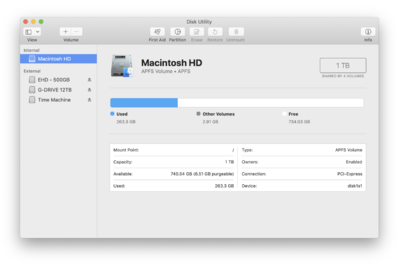-
Posts
4,097 -
Joined
-
Last visited
-
Days Won
51
Everything posted by Brian
-
I just checked. Glary Utilites Pro is currently $19.95, which is 50% off. That's not a bad price. It seems to act more like "CleanMyMac" with the One-Button interface. I'd pick it up for $20. You'll spend more than that getting coffee every morning at the Coffee Shop on the corner over the course of a week.
-
Yeah, you have lots of software to remove, go hunting. Kill both of those too. In reality, the paid versions of those software packages work better. Free ones are there to "Advertise" and to get you buying the full-versions. They really don't do much in the way of protection, and really just get in the way of stuff. Plus computer manufacturers like Dell, get paid from places like McAfee to be pre-installed on your computer. This helps keep costs down to the consumer. Unfortunately, these pre-installed software packages benefit the Manufacturers more than the consumer. Stuff like this isn't just limited to a computer. There is a reason that Sugar-Based Colorful Cereals are at eye-level for a 8-10 year old in the Grocery Store. Or why things are located on an end-cap. Supermarkets are paid to put products in certain locations.
-
Why not? It's already broken. If it works, great. If not, a re-format is in your future anyway. I used to use CCleaner for YEARS. Until in 2017, they got bought by AVAST! Antivirus. Then CCleaner became EVIL and started installing software, like Avast! AntiVirus without the end-user's knowledge. So you might want to un-install CCleaner, and any other software you do not recognize, then reboot. Download Glary and do a scan. I'm wondering if you do have some rogue software that is messing things up. Antivirus software is often the cause of things not installing properly. Bottom Line: Avoid CCleaner now at all costs. Avast! Antivirus is as useless as Symantec and McAfee these days. Believe it or not, Windows Defender that you get with Windows Updates works REALLY WELL. Yeah, that happens more often than you think. It's probably some sort of software that isn't killing its background processes fast enough for Windows when it closes. This is one of those things that I would have to be there to see what it is. This type of thing is hard to fix over the internet.
-
There was a space between the Slash and ScanHealth. That's why it didn't work at first. With the command line, spelling and correct spacing is really important. Honestly, I'm kind of out of ideas. Other than un-installing both versions of Bridge, running Glary to help remove the left-over bits, then rebooting. Is all I have left. Then reinstall Bridge. But I think you have done that...and we are looking at a reformat and re-install. Ugh. I wish I was more of a help. Sometimes Windows just gets botched up and there is nothing you can do about it. The reason why it's not working is simply, "Just because..." or "It just is..."
-

What is the best manual setting for Canon Rebel T6?
Brian replied to BrittanyCollins42's topic in Photo Gear & Equipment
Oh, one more thing...find a Qualified Makeup Artist and have them there prior to the shoot. This is where a large hotel room with a large bathroom / Mirror helps. There is something about having a Professional do a person's Hair & Makeup that creates a positive "Vibe." They will "Feel" beautiful and not like their "Normal Self." This WILL impact the photos in ways you can't comprehend now. It's hard to explain. When a woman is all "Dolled Up" wearing Lingerie, they will feel different and that will make things so much easier when you start photographing them. They may be willing to pose in a certain way that they wouldn't do in a normal situation. -
Son-of-a-Bitch!!! A HUGE FACEPALM on my part. I completely forgot about the Security & Privacy Settings!! We have had to click a few check-boxes in that module over the years to make the MacOS play nice with Adobe's products. THANK YOU!!!
-

What is the best manual setting for Canon Rebel T6?
Brian replied to BrittanyCollins42's topic in Photo Gear & Equipment
Then you need to practice PRIOR to your session. You have no business "Learning" on a Paid Gig. Once you get your lens, use something like an upright vacuum cleaner or even a large coffee can to practice. Fiddle & play around. Learn what the lens will do and what it won't do. If you have a specific room to be shooting this Boudoir Session, then practice in there. No sense in figuring out that you need to stand on a ladder in the top corner of the room to get the shot that you want because your 50mm is too long of a focal length. With Boudoir Photography, you as the Photographer, NEED TO BE RELAXED. If you are stressing out or otherwise look frustrated, your subject will pick up on that and the photos will turn out badly. Unfortunately, there isn't a "correct" answer or recipe that I can give you. I'm not going to tell you to shoot at f/2.0 - 1/320th SS and ISO 400. Because that might work. Or it may not. You might find that f/2.8 works better. Or f/4. It really depends. Also, learn how to read your camera's Histogram Properly. Do not use the image on the back of your camera to judge proper exposure. Your camera's LCD is a lying and cheating whore who will sell you down the river if given the chance. Basically, it is all about learning how to control your Depth of Field with the Wider Apertures, f/1.8, f/2.0, f/2.8, etc. Your shutter speed should be fast enough that it doesn't introduce camera shake 1/250th is a good place to start and your ISO should be kept low as possible, but fast enough to obtain a proper exposure. So in reality, Boudoir Photography isn't much different than family / group photography, or any other type of photography, but there is more emphasis on posing and really paying attention to light as you can't more a bed or whatever to be next to a window. Well, not easily. I'd worry more about posing than what camera settings to use. Women are funny creatures, LOL...and have all sorts of body hang-ups. Girls...want to look pretty. Guys...they just want to look cool in photos. That's the secret to both. I've done boudoir stuff in the past. The biggest problem is gonna be with that 50mm focal length, especially if you are doing things in a small room. You really should have a wider lens at the ready as well. (Like a 35mm or 24mm.) Plus, pay attention to all the crap that is in the room. All of that "stuff" in the background of a person's belongings, all that just distracts from the intent. In reality, I'd recommend renting a fancy hotel room where you can move around. Even finding a Bed & Breakfast in an old Victorian House can help set the mood. Add this to the cost of your fees. Schedule multiple Boudoir Sessions to make it your worth your trouble. I've seen some Boudoir Photographers rent out a room for a Weekend and use it for a "Getaway" during the night between Sat & Sunday. Finally, do not be afraid of shadows and creating a moody scene. I find the best Boudoir Photographer embraces shadows and darks. This isn't the Smith Family at the Park who wants a photo for their Christmas Card where everyone and everything needs to be well-lit and in focus. -
Let's do the ScanHealth option next. Report back.
-
There are a few more things we can do to check Windows. Open another Command Prompt, and click on Run as administrator when you type CMD. Type the following command and press Enter: DISM /Online /Cleanup-Image /CheckHealth Press enter and let it do its thing. This scan doesn't take very long. IF the quick scan comes back with any errors let's run a more robust scan: DISM /Online /Cleanup-Image / ScanHealth If that comes back with error messages about file corruption, then type the following command and press Enter: DISM / Online /Cleanup-Image /RestoreHealth If you don't feel like typing the commands, just copy the ones I typed out and in the Command Prompt box, hit CTRL+V to paste them then hit enter. Let me know what Windows finds.
-
First off, get Firefox. Use it to download stuff. But before you do that, open the Adobe Mothership Program CC Manager. Look for Bridge and click the three dots: You are looking for Other Versions. Version 10.1.1 is the oldest that I can personally install.
-

What is the best manual setting for Canon Rebel T6?
Brian replied to BrittanyCollins42's topic in Photo Gear & Equipment
You tell me. It's all subjective and depends on the lighting conditions and what you are shooting. So what do you shoot mostly? -
Honestly, I don't have an answer for you. Calibration is Damien's thing. It's these two blasted graphics cards that are built into current Macbooks. I would load the Calibration Software, and then do this: https://support.apple.com/en-us/HT202053. We need to find out what Graphics Card the Calibration software is using. Also, we need to find out if it's loading the correct Monitor Profile. I'm thinking the Spyder 5 is calibrating the Intel Card and creating a profile for that, but Photoshop is using the AMD video card. So when Photoshop loads, it doesn't have the correct monitor profile to utilize. But I could totally be wrong on this one. Make sure you are using the latest version of the Spyder 5 Elite Software and check to see if the Spyder 5 Pro software is using the AMD Video Chip. (See Link above.) Re-calibrate using Damien's instructions. I'm wondering if there is some sort of option / preference setting in the Spyder Software that makes is use the AMD Radeon Pro Card. You might have to go hunting in the configuration menus.
-
"Doesn't happen with Lightroom." LOL!!! Had to say it. This is a common problem with Bridge and I've seen thread with this same problem go all the way back to the CS4 and CS5 days! I haven't found a true "Fix" just yet. From what I have found is you clear out Bridge's setup files. Start Adobe Bridge and immediately press Command+Option+Shift until the Reset Settings Dialog Box appears. Select all three options: Reset Preferences Reset Standard Workspaces Purge Entire Thumbnail Cache Then click OK. You can also check "Prefer thumbnail generation over preview generation" in Bridges' Preferences Section. Here is the official fix from Adobe: https://helpx.adobe.com/bridge/kb/bridge-cc-freezing.html Basically, update to the latest version of Bridge. Then click on your Hard Drive, and let it sit at the "building criteria" box. Get up from your computer and go watch a long movie. One of the Lord of the Rings Movies should do it. Or click on it and go to sleep for the night. Hopefully when you wake up, Bridge will stop being stupid. There really isn't a fix for this. Sorry.
-
Is the drive spinning at all? Meaning, do you feel it vibrating? Have you tried different USB ports on the back of your computer? Also, do you have a Thumb Drive? Some people call it a USB Stick or a Pin Drive. If you do, insert that into the back of your Mac, and it should pop up on the desktop now if you turned on all the check-boxes in my instructions above. If the Thumb Drive does not appear, I think there is something wrong with your USB ports and a trip to the Genius Bar (or call Apple) might be in your future.
-
SOMETHING should pop up. Can you post some photos of the external drive? Including the cable that should have come with it?
-
Is the new external hooked up to a USB port built into the computer? Does this EHD have an external power adapter or just two USB ports coming out of it?
-
The first thing I want you to do, if you haven't already, is turn on the feature that allows you to see HDs and other "Mounted Devices" on your Mac Desktop. Open the Finder. The easiest way is to click the Smiley Face on your DockBar: Then head to the Finder Menu and select Preferences: Once there put checks next to these items and change the bottom to "Macintosh HD" if you want: From there, just click the Red Circle in the upper left corner to apply the changes. Now for Part 2... First, plug in new Western Digital External into a USB Port on your Mac. It may appear on the desktop, it might not. Next, Open Disk Utilities. Head to Applications Menu >> Utilities >> Disk Utilities. This is where your Disk Utilities might look slightly different. Anyway, here is mine: At this point, you are going to have to work with me. Post a Screenshot in this thread of what your Disk Utility Window looks like and we will continue.
-
Yeah, I know, it's NOT the thing you wanted to hear. Also, if you bought the lowest end 21.5" iMac, the one that is $1000. Guess what? IT IS NOT UPGRADE-ABLE AT ALL. If your cost was the $1499 one, then you can upgrade it. Well, Apple has to do it. Yes, I can help you with getting that HD to work. It's easy.
-
I'm thinking this might be the issue: I'm wondering if it's calibrating the Intel Graphics Card and not the AMD. I think the AMD is only used with an external display, but I'm not 100% sure on that one. You also might need to invest in a Spyder X Elite, but that is the last resort.
-
Not by normal means. I'm thinking the controller chip in the card might be faulty. How important are these images? The problem is, the more you dork around with the card, the less likely you will be to recover those images. Believe it or not, stuff like this is common, even on a Windows computer. I've blown a few USB Thumbdrives over the years by not ejecting them properly. It happens. Usually at the worst possible moment. The problem is, your card isn't "Mounting." So your typical software is going to look for a device in the finder. If it's not there and the computer can't see the card, neither can the recovery software. I'd give these guys a call and schedule data recovery with them. What I think happened is some sort of electrical short happened with one of the components and the card is just not powering up. The data could still be intact on the individual memory chips, it's just the controller chips allowing for that to happen are defective in some way.
-
You might really want to start saving. If you are staying with a Mac, and I'm a Mac user, then your budget should be around $3200 (US Dollars). Please give this article a read: In short, Apple wants you to "Go Big or Go Home." They have always been expensive. Actually, they are cheaper now. Way back in 1984, when the Macintosh Computer was introduced, the price was $2499.99. In today's money, that would be $6,262.73, which is the price for a fancy Mac Pro. So in reality, for what you are getting at today's price-point, a Mac is "cheaper" today than it was decades ago. It just still sucks that $3000 is still $3000.
-
OK, see this here: This is your main problem. 8GB is barely enough to run today's modern software. You need more RAM. Unfortunately, this is not an easy thing to upgrade since you have a 21.5" iMac. The other problem is your under-powered Graphics Card. Your computer is meant for general computing. Which means, wasting time on Facebook, watching YouTube Videos, answering e-mails, and spending way too much on Amazon. Not photo editing. It's like you bought a 2-Door Honda Civic and you really need a 4-Wheel Drive Vehicle to go off-roading in the mountains somewhere, complete with driving through rivers and mud. While an external HD will help you storage-wise, it's not going to solve your computer speed issues. In a nutshell, you will need to find either a Authorized Repair Center that's open, OR find a Apple Store that you can drop your Mac off, because you have to completely and I mean, completely, tear your entire 21.5" iMac apart since there isn't an access panel to upgrade the RAM. The current 21.5" iMacs are basically sealed units encased in glue...they are a PITA to take apart. I've been a Senior Technician for close to 28 years, and *** I **** wouldn't dare take a 21.5" iMac apart. Right now you have two choices. Fork out the money and get the RAM to the highest possible level, and that should be at least 16GB. Start Saving and buy a 27" iMac. I'm sorry you have to find this out the hard way, since I know how expensive Macs are. Here is a blurb from this article of my thoughts on a 21.5" iMac:
-
OK. first things first. I need a little more info about your Mac and exactly what Western Digital Hard Drive model you purchased. Please click on this link: https://www.damiensymonds.net/thread1.html and post the results here in this thread. I also have other questions, don't return anything yet.
-
I got the notification! Thank You Very Much!!
-
Honestly? No. I will say, one of the things that Macs have done REALLY WELL is when it comes to upscaling. Even though I have a 5K 27" iMac, It looks like I'm typing on a 27" standard screen, the 2560 x 1440 models. Windows still hasn't done this type of stuff really well. Things are so tiny on the screen until you dork around with settings. If you are editing photos a standard 27" or 24" Monitor is fine, especially if you get a 27" one. Don't fall for Marketing. 8K screens are already out and Manufacturers want you to buy them. Then it will be 16K, then 32K, etc. How much detail are you really going to need? Seriously. If your clients are only viewing stuff on their phones or un-calibrated monitors, and not at 300% then anything fancy is just "bragging rights." Save your money. Put it towards a new Pro-Grade Lens, or a trip somewhere. Invest in Education, not the latest 4K screen because you think it will make you a better photographer. Better Glass...Better Technique...Understanding Light...THAT'S WHAT MAKES YOU BETTER.

